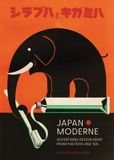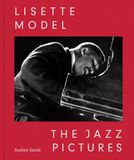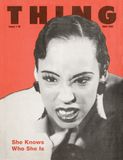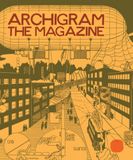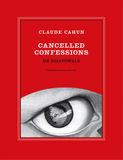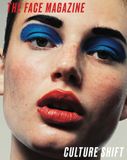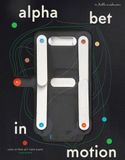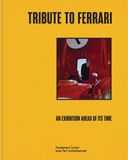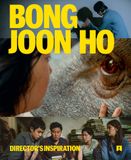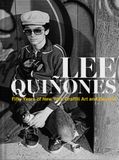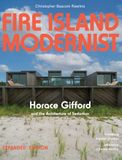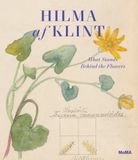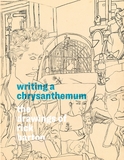| |||||||||||||||||||||||||
ARTBOOK BLOGEventsStore NewsMuseum Stores of the MonthNew Title ReleasesStaff PicksImage GalleryBooks in the MediaExcerpts & EssaysArtbook InterviewsEx LibrisAt First SightThe Artbook | D.A.P. 2025 Gift GuidesArtbook Featured Image ArchiveArtbook D.A.P. Events ArchiveDATE 11/30/2025 Artbook at Hauser & Wirth Los Angeles Bookstore presents Kelli Anderson and Claire L. Evans launching 'Alphabet in Motion'DATE 11/27/2025 Indigenous presence in 'Wendy Red Star: Her Dreams Are True'DATE 11/24/2025 Holiday Gift Guide 2025: Artful Crowd-PleasersDATE 11/22/2025 From 'Bottle Rocket' to 'The Phoenician Scheme' — the archives of Wes AndersonDATE 11/20/2025 The testimonial art of Reverend Joyce McDonaldDATE 11/18/2025 A profound document of art, love and friendship in ‘Paul Thek and Peter Hujar: Stay away from nothing’DATE 11/17/2025 The Strand presents Kelli Anderson + Giorgia Lupi launching 'Alphabet in Motion'DATE 11/15/2025 Holiday Gift Guide 2025: Stuff that StockingDATE 11/15/2025 Artbook at MoMA PS1 presents Cory Arcangel, Eivind Røssaak and Alexander R. Galloway launching 'The Cory Arcangel Hack'DATE 11/14/2025 Columbia GSAPP presents 'The Library is Open 23: Archigram Facsimile' with Beatriz Colomina Thomas Evans, Amelyn Ng, David Grahame Shane, Bernard Tschumi & Bart-Jan PolmanDATE 11/13/2025 Holiday Gift Guide 2025: For the Photo FanaticDATE 11/13/2025 Holiday Gift Guide 2025: For the Edition CollectorDATE 11/13/2025 Pop-up pleasure in Kelli Anderson's astonishing 'Alphabet in Motion' | STAFF PICKS | FROM THE SHELVES
| ||||||||||||||||||||||||
STATUS: Out of print | 00/00/00 For assistance locating a copy, please see our list of recommended out of print specialists |
 Rirkrit Tiravanija: Soccer Half-time Cookery Book
Rirkrit Tiravanija: Soccer Half-time Cookery Book
Published by Verlag für moderne Kunst.
Essays by Raimar Stange and Florian Waldvogel.
For the World Cup, Rirkrit Tiravanija, the Thai artist known for works that incorporate the provision of ingredients and the cooking of meals for or by viewers, has created a cookbook for halftime. He presents 16 recipes, one for each match in the preliminary rounds, to be prepared and eaten midway through the contest. Cheerful lists and instructions are supplemented by photographs of friends watching football on TV, and Tiravanija incorporates the World Cup motto "time to make friends"--which is dear to his own heart and central to his sociable, intercultural artistic practice--as the book's mission statement. Rirkrit Tiravanija is the winner of the 2004 Hugo Boss prize and recently had a retrospective at the Serpentine Gallery in London. He is represented in New York by Gavin Brown.
PUBLISHER
Verlag für moderne Kunst
BOOK FORMAT
Paperback, 5 x 9 in. / 64 pgs / 20 color.
PUBLISHING STATUS
Pub Date 8/15/2006
Out of print
DISTRIBUTION
D.A.P. Exclusive
Catalog: FALL 2006 p. 121
PRODUCT DETAILS
ISBN 9783938821404 TRADE
List Price: $35.00 CAD $40.00
AVAILABILITY
Not available
STATUS: Out of print | 00/00/00 For assistance locating a copy, please see our list of recommended out of print specialists |
 Aurel Schmidt: Man Eater
Aurel Schmidt: Man Eater
Published by Deitch Projects.
Text by Kathy Grayson.
With colored pencils and graphite, the rising, self-taught artist Aurel Schmidt, born in Kaloomps, Canada, in 1982, renders terrifying, Arcimboldo-esque babes with a highly charged, punk sensibility alongside forests of maggots, busts of tangled snakes, faces and figures made of spiders, cockroaches, cum and discarded hamburger. Man Eater, the first comprehensive volume devoted to Schmidt’s work, includes more than 60 drawings from the last five years, amplified by a generous selection of details that allow the reader to fully experience the painstaking precision of the artist’s hand. Featuring works from her recent solo exhibitions at Deitch Projects in New York and Peres Projects in Los Angeles, as well as drawings shown at the Deste Museum in Athens, Greece, this volume includes images from Schmidt’s Burnouts series of cigarette-burned faces and Party Monster series depicting New York City nightlife gone wild. Essay by curator Kathy Grayson.
PUBLISHER
Deitch Projects
BOOK FORMAT
Paperback, 8.5 x 9.75 in. / 160 pgs / 150 color.
PUBLISHING STATUS
Pub Date 2/1/2009
Out of print
DISTRIBUTION
D.A.P. Exclusive
Catalog: SPRING 2009 p. 90
PRODUCT DETAILS
ISBN 9780981577142 TRADE
List Price: $45.00 CAD $60.00 GBP £40.00
AVAILABILITY
Not available
STATUS: Out of print | 00/00/00 For assistance locating a copy, please see our list of recommended out of print specialists |
 Daniel Spoerri: Eaten By
Daniel Spoerri: Eaten By
Published by Kerber.
Text by Dieter Ronte, Wieland Schmied, Christiane Morsbach, Enrico Pedrini.
Daniel Spoerri was a co-signatory of the Nouveau Réalisme manifesto in 1960, an early member of Fluxus and the author of the classic Anecdoted Topography of Chance, which recorded and annotated the contents of Spoerri's desk. In 1968 Spoerri also opened Restaurant Spoerri, introducing his concept of "Eat Art," which he had initiated a decade earlier, and which explored the creation, decay and "trapping" of food upon tables that were then recapitulated as assemblages. Marking the occasion of the artist's eightieth birthday, Daniel Spoerri: Eaten By approaches the theme of food throughout Spoerri's oeuvre, from the early 1960s to the present. It includes the artist's replica of the Restaurant Spoerri, a survey of Spoerri's trap pictures from 1978 to 1992, and a large number of more recent assemblages and sculptures, bringing his audience fully up to date.
PUBLISHER
Kerber
BOOK FORMAT
Hardcover, 8.75 x 11 in. / 144 pgs / 66 color / 5 bw.
PUBLISHING STATUS
Pub Date 9/30/2010
Out of print
DISTRIBUTION
D.A.P. Exclusive
Catalog: FALL 2010 p. 113
PRODUCT DETAILS
ISBN 9783866783423 TRADE
List Price: $49.50 CAD $65.00
AVAILABILITY
Not available
STATUS: Out of print | 00/00/00 For assistance locating a copy, please see our list of recommended out of print specialists |
 Eating the Universe
Eating the Universe
Published by DuMont.
Text by Magdalena Holzhey, Renate Buschmann, Ulrike Groos, Beate Ermacora, Elke Krasny, Nikolai Wojtko, Christiane Boje.
In 1968, artist Daniel Spoerri founded Restaurant Spoerri in Düsseldorf; two years later he opened the Eat Art Gallery, where artists such as Joseph Beuys, Roy Lichtenstein and Dieter Roth exhibited objects made of foodstuffs. Taking the activities of Eat Art as its starting point, Eating the Universe gathers together artworks that have been made using edible materials, starting in the 1970s and continuing through to the present day. Over the past decade in particular, artists have evinced a growing interest in food and eating, concomitant with an increasing overall consciousness about the political, ecological, cultural and economic dimensions of what we put in our mouths. With 170 color images, Eating the Universe presents a range of contemporary artwork that explores linkages between food and the formation of identity, societal affluence, globalization and awareness of one's own body.
PUBLISHER
DuMont
BOOK FORMAT
Hardcover, 7.75 x 10.25 in. / 312 pgs / 170 color / 25 bw.
PUBLISHING STATUS
Pub Date 7/31/2010
Out of print
DISTRIBUTION
D.A.P. Exclusive
Catalog: FALL 2010 p. 113
PRODUCT DETAILS
ISBN 9783832192402 TRADE
List Price: $59.95 CAD $70.00
AVAILABILITY
Not available
STATUS: Out of print | 12/1/2010 For assistance locating a copy, please see our list of recommended out of print specialists |
|
the source for books on art & culture
CUSTOMER SERVICE
orders@artbook.com
212 627 1999 ext 202
M-F 10-6 EST
Ingram Customer Care
800-937-8200 option 3
orders@dapinc.com
NEW YORK
Showroom by Appointment Only
75 Broad Street, Suite 630
New York NY 10004
Tel 212 627 1999
LOS ANGELES
Showroom by Appointment Only
818 S. Broadway, Suite 700
Los Angeles, CA 90014
Tel. 323 969 8985
ARTBOOK LLC
D.A.P. | Distributed Art Publishers, Inc.
All site content Copyright C 2000-2025 by Distributed Art Publishers, Inc. and the respective publishers, authors, artists. For reproduction permissions, contact the copyright holders.
The D.A.P. Catalog
www.artbook.com










